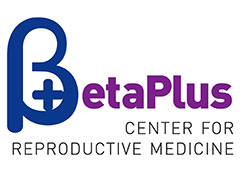31.3.2017. Add-on Fertility Treatments – embryo glue, DNA fragmentation, time-lapse embryo monitoring, PGS/PGD, assisted hatching…
Today, when media is widely present in our lives, patients often read news on reproductive medicine where some new, all-powerful and revolutionary method is being described. After reading such news they ask whether we use such method. We tend to introduce the new methods once there is enough medical proof that they actually help, so we often do not use the method they are interested in, at least yet. In treating poor responders, we are much more inclined to try the less explored solutions, but when it comes to general population, we tend to be cautious using experimental treatment methods.
Therefore, we are glad to present the conclusions of an article titled Little Evidence to Show Benefits of Add-on Fertility Treatments published in Human Reproduction on March 21, 2017, as it resembles our beliefs. Add-on fertility treatments are additions to common infertility treatments. They are often being introduced in clinical practice too early and without enough proof based on serious research that these methods actually improve the success rates. The reasons for this may be an attempt to improve the success rates of ART cycles, but also the marketing strategy.
Here is what the authors of the article have found on the following methods of treatment:
Embryo glue is a culture medium enriched with hyaluron that is given to improve embryo adherence, i.e. chances for successful pregnancy after implantation. The published evidence is of moderate quality and suggests a small increase in pregnancy rates, but caution is advised before regular use in everyday clinical practice.
Sperm DNA fragmentation testing is controversial and potential benefits are based on low-quality evidence. Some suggest lower fertilization and implantation rates and higher miscarriage rates with elevated fragmentation indices. However, these findings are based on low-quality studies.
Time-lapse monitoring of embryos is beneficial for teaching, quality control, and scheduling laboratory work. Prospective validation is still required.
Preimplantation genetic screening (PGS) to detect aneuploid embryos probably improves outcomes of IVF procedures in young, high-responder patients, though trial methodology issues were raised. Cost-effectiveness has not been proven, and benefit in more challenging patients (low-responder) has not been documented yet.
Mitochondrial DNA for assessing embryo selection is currently under evaluation in randomized controlled trials, and although the possible benefits of this method are still unknown, it is already on the market.
Assisted hatching remains controversial. While there may be certain subgroups of patients where benefit can be gained, in general its use is not recommended as it is an invasive method, and was not shown to improve pregnancy rates.
In BetaPlus Center we entirely agree with the findings presented here and currently do not offer these methods. This could change if and when it is shown that these methods improve the success rate of treatments without negatively affecting the embryos.




